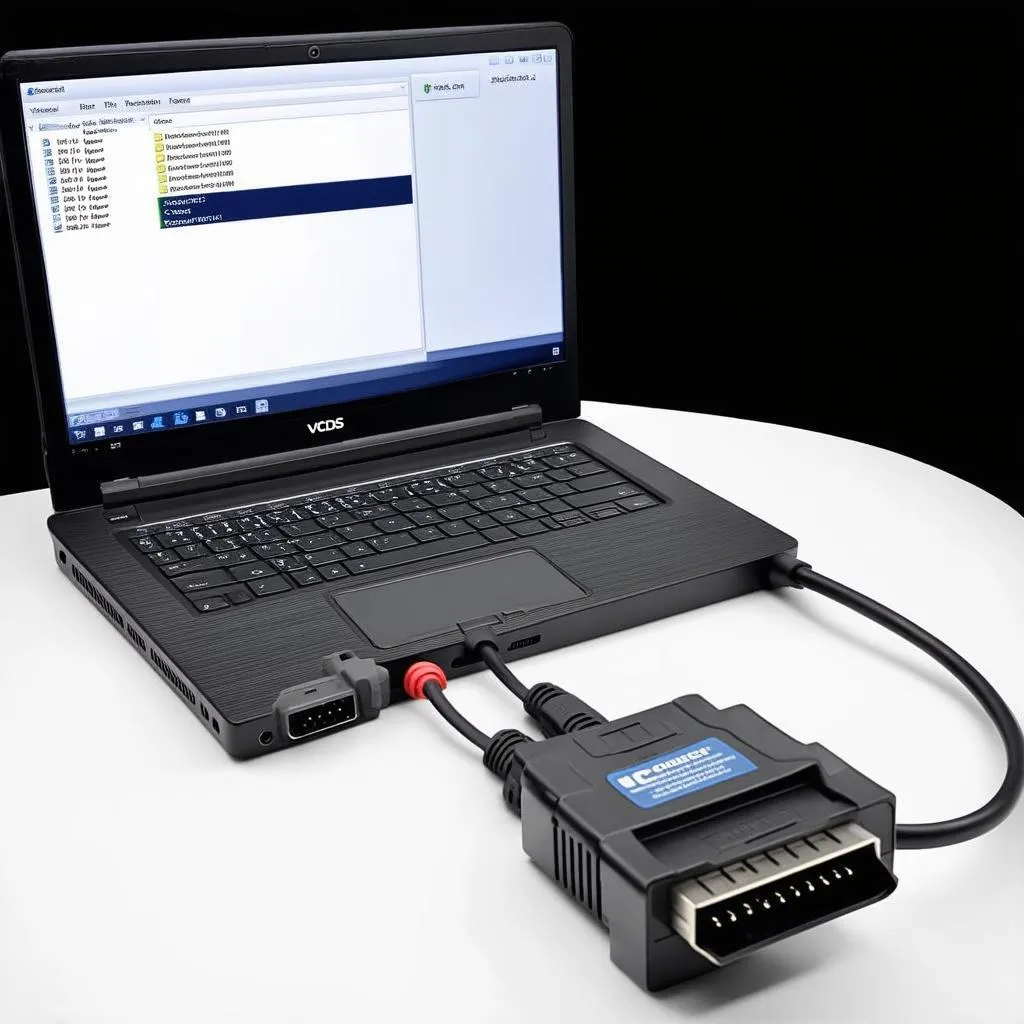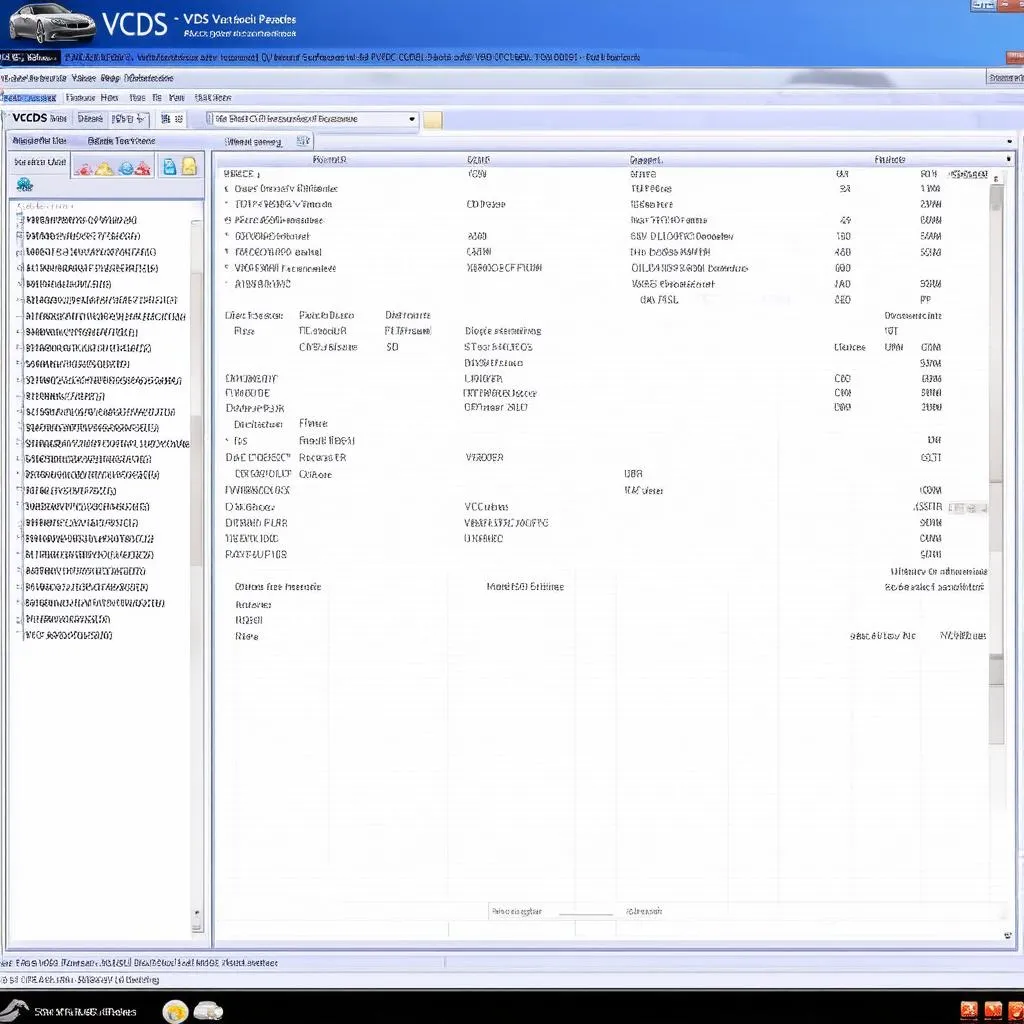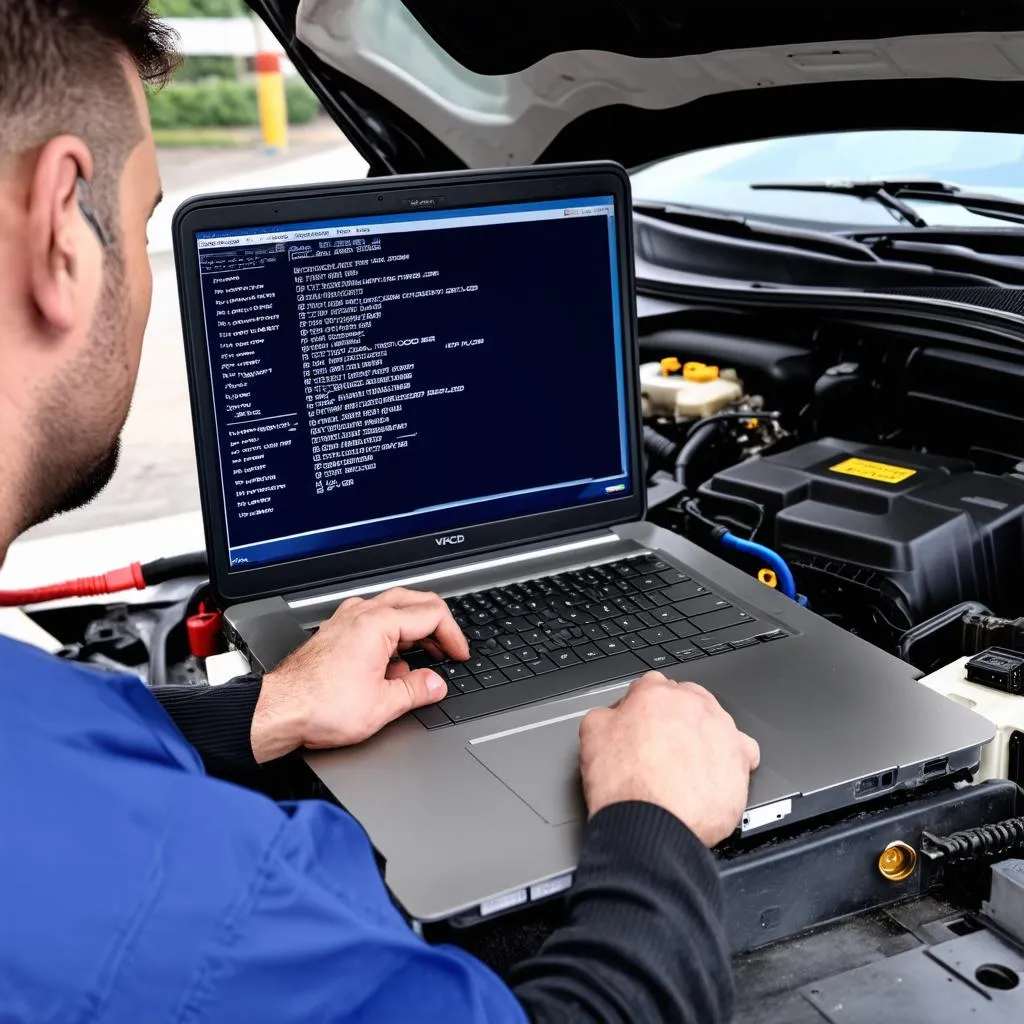Owning a Volkswagen Audi Group (VAG) vehicle comes with its own set of joys and challenges. When those challenges involve pesky warning lights and confusing error codes, a VCDS machine can be your best friend. This comprehensive guide delves into the world of VCDS machines, providing you with the knowledge to unlock your car’s inner workings and tackle those automotive puzzles head-on.
What is a VCDS Machine?
VCDS, which stands for “VAG-COM Diagnostic System,” is a powerful diagnostic software and hardware suite specifically designed for VAG vehicles. Think of it as a direct line of communication between your car’s computer and your brain (with the VCDS machine acting as the translator).
The system consists of:
- Software: The VCDS software, available for Windows PCs, provides a user-friendly interface to read, interpret, and clear fault codes, adjust settings, and perform advanced diagnostics.
- Interface Cable: This cable connects your computer to your car’s OBD-II port, usually located under the dashboard on the driver’s side. It acts as the bridge, transmitting data between the vehicle and the software.
Why Do You Need a VCDS Machine?
Imagine this – your check engine light throws a temper tantrum. A generic OBD-II scanner might tell you there’s an issue with the emissions system, but that’s like saying, “Something’s wrong somewhere in Europe.” A VCDS machine, on the other hand, pinpoints the exact culprit, whether it’s a faulty oxygen sensor, a loose gas cap, or something more sinister.
Here’s how a VCDS machine can empower you:
- Accurate Diagnostics: Retrieve and decipher detailed fault codes from all the control modules in your car, going beyond the basic OBD-II capabilities.
- Customization: Tweak and personalize your car’s settings to your liking. Want to enable hidden features, adjust your automatic windows’ behavior, or fine-tune your lighting? VCDS lets you do that.
- Maintenance and Repairs: Perform service resets, conduct adaptations (like throttle body alignments), and run specific tests on various components, saving you trips to the mechanic for routine tasks.
 VCDS Machine Connected to Car
VCDS Machine Connected to Car
Choosing the Right VCDS Interface
Not all VCDS interfaces are created equal. They vary in features, functionality, and price. Here’s a quick rundown:
- Genuine Ross-Tech HEX-V2/HEX-NET: These are the official interfaces from Ross-Tech, the developers of VCDS. They offer the most features, compatibility, and support.
- Third-party Interfaces: While more affordable, these interfaces may have limited functionality or compatibility issues. It’s crucial to choose a reputable brand and check user reviews before purchasing.
Getting Started with VCDS
Once you have your VCDS machine ready, using it is relatively straightforward:
- Install the software: Download and install the VCDS software from the Ross-Tech website.
- Connect the interface: Plug the VCDS interface cable into your computer’s USB port and the other end into your car’s OBD-II port.
- Turn on the ignition: Switch your car’s ignition to the “on” position (but don’t start the engine).
- Launch VCDS: Open the VCDS software on your computer. It should automatically detect and connect to your interface and vehicle.
Navigating the VCDS Software
The VCDS software might seem daunting at first, but it’s surprisingly intuitive.
- Select Control Module: Choose the specific control module (e.g., engine, transmission, airbags) you want to diagnose or modify.
- Read Fault Codes: This function scans the selected module for stored fault codes, displaying them with detailed descriptions.
- Clear Fault Codes: Once you’ve addressed the underlying issue, use this function to clear the fault codes.
- Measuring Blocks: Access live data streams from various sensors and components, allowing you to monitor their performance in real-time.
 VCDS Software Interface
VCDS Software Interface
Common Uses of VCDS
The applications of a VCDS machine are vast and varied. Here are just a few examples:
- Diagnosing Engine Issues: Identify misfires, sensor faults, and other engine-related problems.
- Troubleshooting Transmission Problems: Diagnose issues with shifting, clutch engagement, and automatic transmission control units.
- Analyzing Airbag Systems: Read and clear airbag fault codes, ensuring the system is functioning correctly.
- Adjusting Comfort Settings: Modify convenience features like automatic door locking, coming home/leaving home lighting, and window behavior.
FAQs about VCDS Machines
Q: Can I use VCDS on any car?
A: No, VCDS is specifically designed for vehicles from the Volkswagen Audi Group, including Audi, Volkswagen, Seat, Skoda, Bentley, and Lamborghini.
Q: Is it legal to use a VCDS machine?
A: Yes, using a VCDS machine to diagnose and modify your own vehicle is legal. However, it’s crucial to use the software responsibly and avoid making modifications that could compromise safety or emissions standards.
Q: Do I need any technical expertise to use VCDS?
A: While VCDS is user-friendly, having a basic understanding of automotive systems is beneficial. Plenty of online resources, forums, and tutorials can guide you.
Conclusion
A VCDS machine is an invaluable tool for any VAG vehicle owner who wants to take control of their car’s maintenance, diagnostics, and customization. Whether you’re a seasoned DIY mechanic or a curious enthusiast, VCDS empowers you to delve deeper into the inner workings of your vehicle. By understanding the power and capabilities of this diagnostic system, you can save time, money, and frustration, keeping your VAG vehicle running smoothly for years to come.
Need expert advice or help choosing the right diagnostic tool? Contact CARDIAGTECH today!

